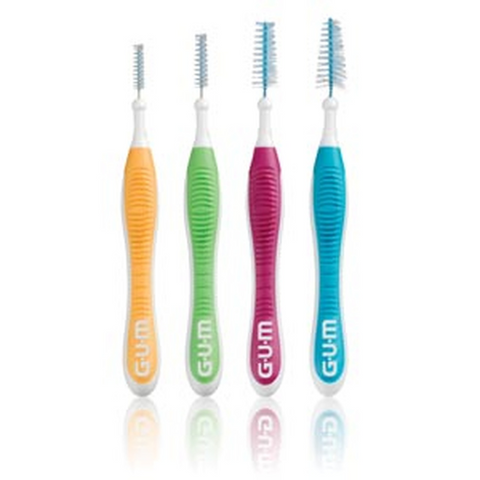- Phone: 1.404.373.4030
- Opening Hours: Mon-Fri 9AM-5PM Eastern

DISCLOSURE: Noelle Copeland RDH is an Oral Care Specialist and Dental Consultant who provides content for Brilliant Oral Care and Baby Buddy.
Dental care for people with disabilities is not all that different than dental care for those without. Everyone needs to have their teeth brushed at least twice a day and flossed at least once a day. They also need to see a dental professional regularly for care and maintenance. Therefore, a wheelchair itself may not be a hindrance to oral care. However, the reason behind the need for a wheelchair could be. For instance, someone with cerebral palsy may not have the ability to grasp or hold a toothbrush, making oral care a provider-assisted activity. They may also not have the mobility to hold their head still and upright, making oral care a challenge.
Some of the tips I’ve learned over the years that have helped me professionally and personally while assisting someone in a wheelchair are the following:
I once had a patient with cerebral palsy, and most of the time, she was up for moving into the dental chair for her cleanings. Sometimes though, she was not. She did have a wheelchair that would recline back some, so we would use her transfer board and slide it behind her back. This allowed her to lean back while having her teeth cleaned and rest her head and neck against the board. This was also how they brushed her teeth at home.
*Don’t leave the water in the spray bottle*.
Empty it, let it air dry, and refill it with fresh, clean water every time it’s used. You can also use this trick for anyone with a dry mouth to help keep the tissues moist.
The challenge seems to be getting further back in the mouth, around the molars. Flossing the molars and premolars can cause gagging, which induces them to bite down, making it very difficult to floss their teeth for them.
The next best thing to using string floss is to use a proxy brush or a gum soft pic.
| PROXY BRUSHES | SOFT PICS |
 |
|
These are my FAVORITE dental tools outside of a toothbrush and floss. The end of the tool is used between the teeth at the gum line, kind of like a toothpick. You insert the cleaner tip in between two teeth and gently scrub back and forth to remove plaque, bacteria, and food from underneath the gums and between the teeth.
The great thing about using interdental tools is that you can use them from the ‘front-side’
of the teeth. You don’t need to try and get your fingers into the mouth, near the tongue. There are even units of proxy brushes with a long handle, the length of a toothbrush if you really struggle with compliance.
Most of my success in oral care for someone in a wheelchair has been in utilizing the options above, in addition to what I typically recommend for dental hygiene, which I will highlight below.
For starters, you need to commit to brushing, in any fashion, twice a day, every day, in the morning, and at night before bedtime. This is literally half the battle right there. If you have adopted the habit of twice a day brushing, you can always work on technique and style later. First, however, the foundation has to be there to build anything of substantial value.
Next, choose the optimal brush type for your specific needs. Most people age 1yrs + will be using a bristle-type toothbrush, and this is the best choice. It’s important to rinse the brush with warm/hot water as a prep rinse before using. This rinses away any dried debris and softens the bristles.
Not everyone can tolerate a bristle toothbrush, so other options may need to be explored, like a silicone-based toothbrush, for instance.
If you were looking for effective and healthy ways to establish oral care routines with your family, you found the right place. https://brilliantoralcare.com/collections/sonic-toothbrushes
Be sure to check out our selection of specialty toothbrushes for individuals with special needs. This includes our silicone toothbrushes that make oral care easy to start. In addition, our sonic toothbrush for kids makes oral care fun, while our sonic travel toothbrush makes oral care a breeze when on the go.
© 2021 Compac Industries. All rights reserved. This article provides information about “oral health topics” as expressed through the perspective and experience of the author. The information provided does not substitute professional advice or counsel, including diagnosing or treating any condition. Always seek the advice of your dentist or another qualified healthcare provider with any questions you may have regarding a medical condition, an oral condition, an illness, or treatment of any listed or unlisted situation above. By using this site, you signify your assent to our Terms and Conditions. If you do not agree to all of these Terms and Conditions, do not use this site.
Noelle Copeland RDH is an Oral Care Specialist and Dental Consultant who provides content for Brilliant Oral Care and Baby Buddy.


DISCLOSURE: Noelle Copeland RDH is an Oral Care Specialist and Dental Consultant who provides content

DISCLOSURE: Noelle Copeland RDH is an Oral Care Specialist and Dental Consultant who provides content

We believe that all people are fearfully and wonderfully made and designed in the womb for a grand purpose.
Useful Links
Copyright © 2023 Compac Industries | All Rights Reserved.